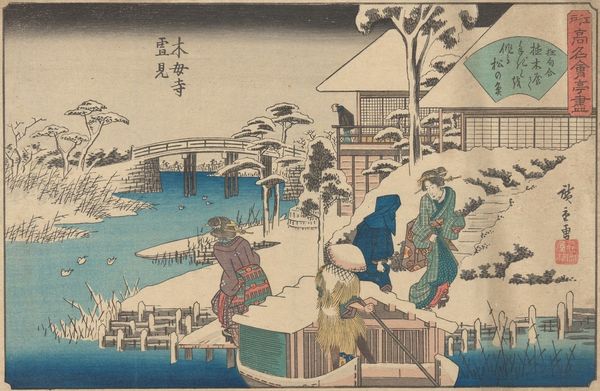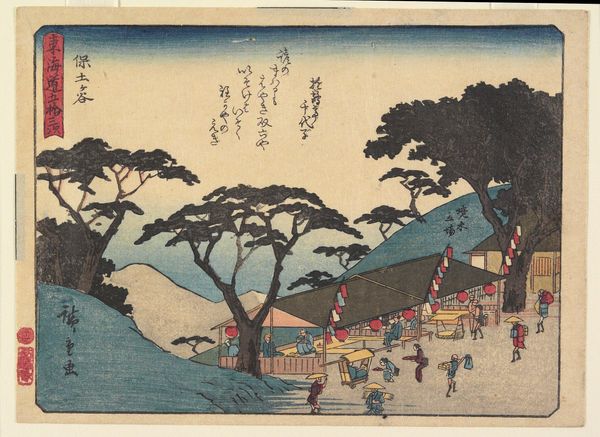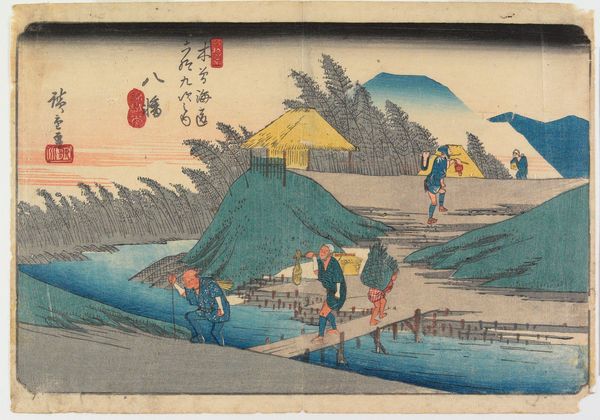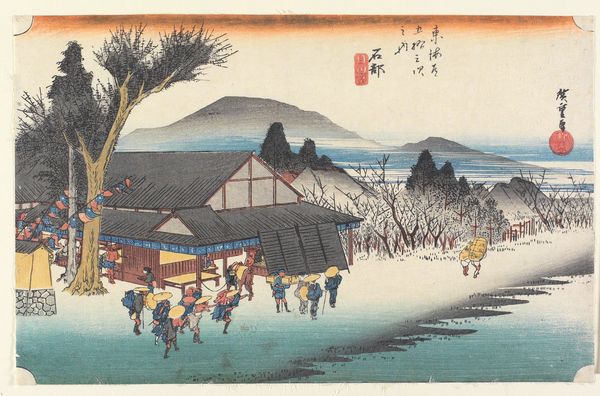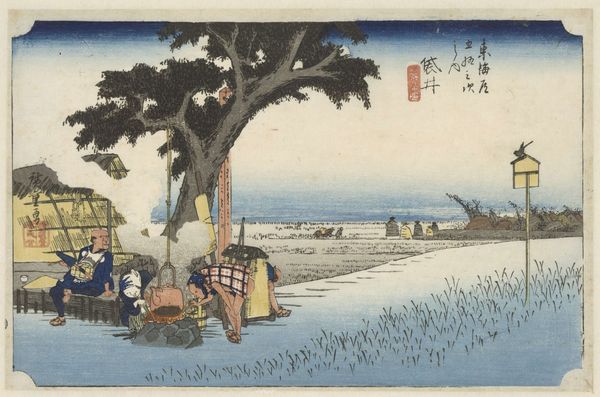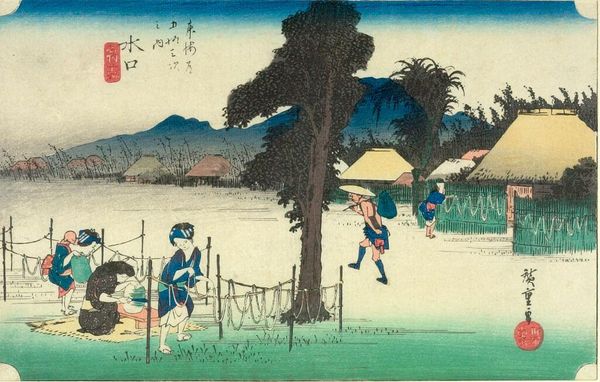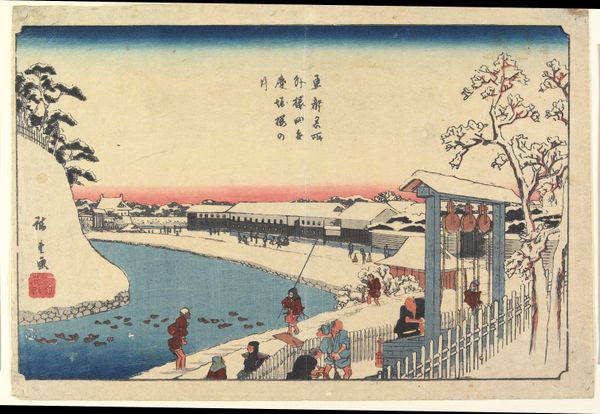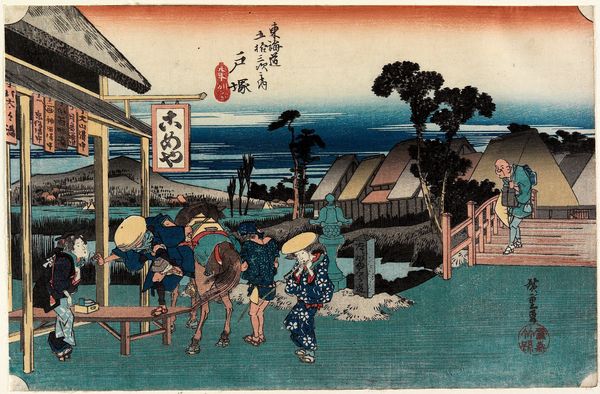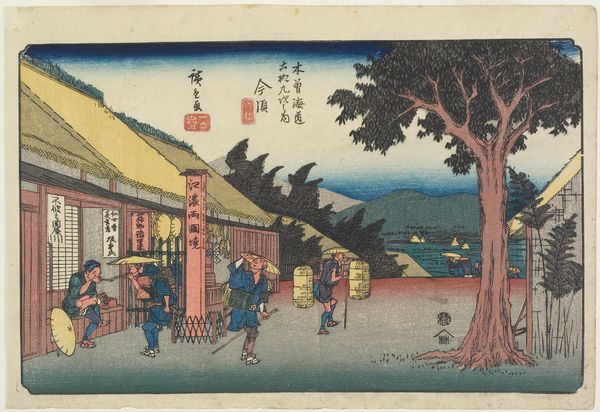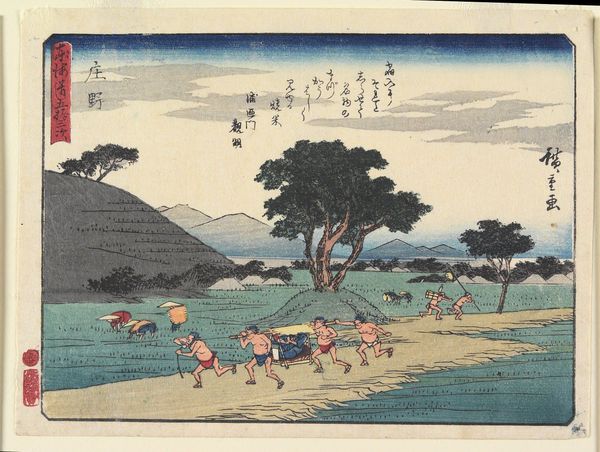
print, photography, woodblock-print
# print
#
asian-art
#
landscape
#
ukiyo-e
#
photography
#
coloured pencil
#
woodblock-print
#
watercolor
Dimensions: height 224 mm, width 349 mm
Copyright: Rijks Museum: Open Domain
Curator: Before us, we have Utagawa Hiroshige's woodblock print, "Minakuchi, het beroemde streekproduct kanpyo," dating from around 1828-1835, part of the "Fifty-three Stations of the Tokaido" series. Editor: My first impression is the sheer amount of labor suggested. The fine lines, the even tone—you immediately sense the care and work put into this small print. It almost feels… cool to the touch. Curator: The scene depicts the Minakuchi station, renowned for kanpyo—dried gourd shavings. Look how the figures are diligently engaged in its production. This print shows how local economies were intricately linked to the Tokaido Road's infrastructure and the shogun’s political and economic reach. Editor: Exactly! See the structures used to hang the gourd strips to dry? They dominate the foreground, defining the social geography here. We should think about the communal aspect of this production; it relies upon both the land and its people working in unison. Curator: And notice the travelers along the road, subtly included; their presence underscores the vital link between local industries and broader travel networks during the Edo period. This artwork is more than a landscape; it’s a snapshot of daily life interwoven with economic activity. The print circulated amongst consumers, boosting visibility to new markets. Editor: I appreciate the choice of media—a woodblock print meant for mass consumption. The ability to replicate this image enabled its widespread dissemination to different demographics, offering consumers at home an invitation to engage with Edo culture. It flattens our conception of ‘fine art,’ forcing us to question hierarchies. Curator: Absolutely. It serves as a lens through which we can explore the multifaceted relationship between art, labor, and social networks in 19th-century Japan, and reminds us to critically examine the narratives and power structures inherent within artistic creations. Editor: The cool palette and the meticulous rendering definitely challenge Western notions about artistic value. Let’s think about whose stories and efforts have often been omitted or overlooked when art histories are recorded. This is exactly what an artwork of this era does!
Comments
No comments
Be the first to comment and join the conversation on the ultimate creative platform.

